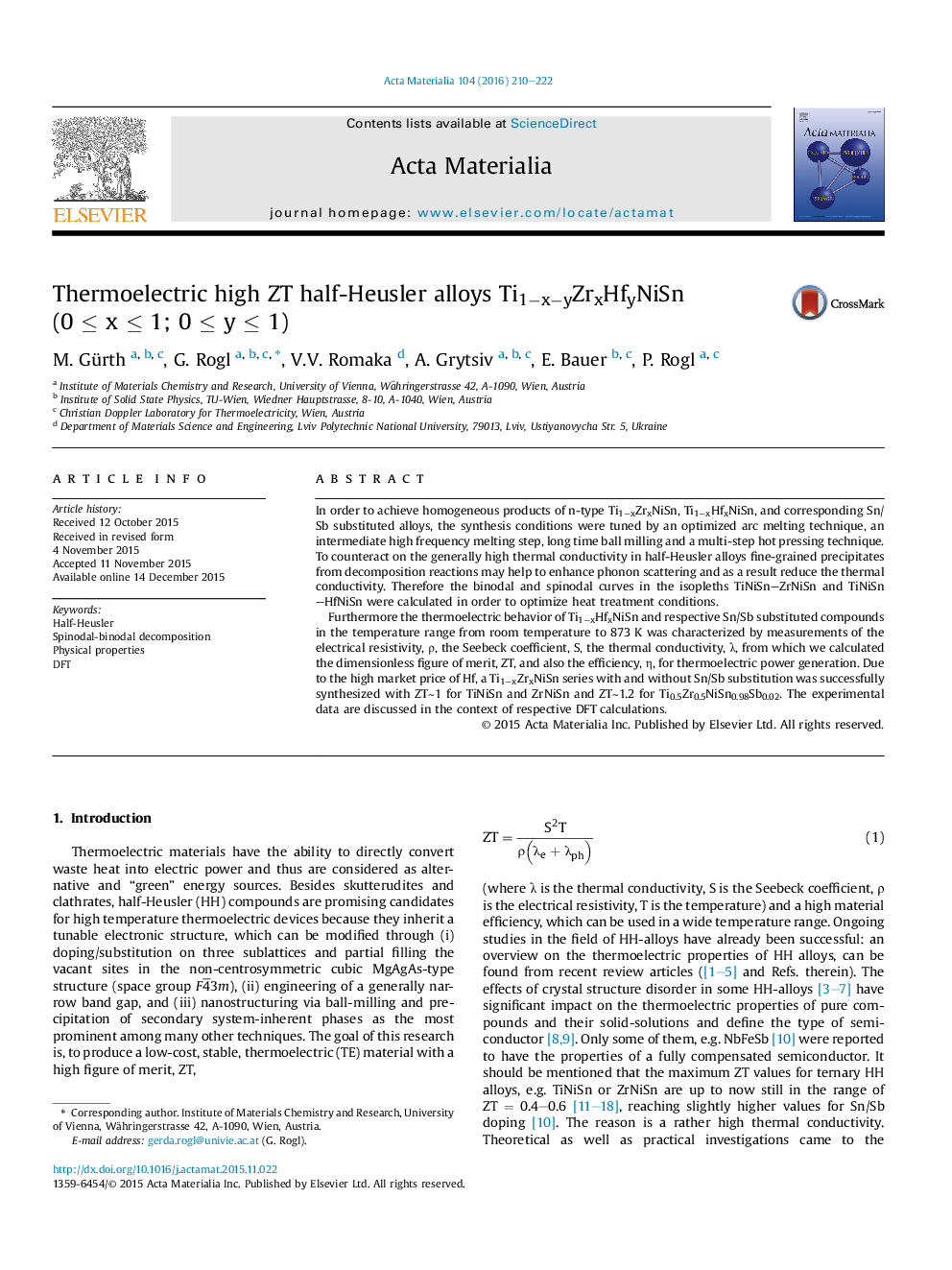| Article ID | Journal | Published Year | Pages | File Type |
|---|---|---|---|---|
| 1445162 | Acta Materialia | 2016 | 13 Pages |
In order to achieve homogeneous products of n-type Ti1−xZrxNiSn, Ti1−xHfxNiSn, and corresponding Sn/Sb substituted alloys, the synthesis conditions were tuned by an optimized arc melting technique, an intermediate high frequency melting step, long time ball milling and a multi-step hot pressing technique. To counteract on the generally high thermal conductivity in half-Heusler alloys fine-grained precipitates from decomposition reactions may help to enhance phonon scattering and as a result reduce the thermal conductivity. Therefore the binodal and spinodal curves in the isopleths TiNiSn–ZrNiSn and TiNiSn–HfNiSn were calculated in order to optimize heat treatment conditions.Furthermore the thermoelectric behavior of Ti1−xHfxNiSn and respective Sn/Sb substituted compounds in the temperature range from room temperature to 873 K was characterized by measurements of the electrical resistivity, ρ, the Seebeck coefficient, S, the thermal conductivity, λ, from which we calculated the dimensionless figure of merit, ZT, and also the efficiency, η, for thermoelectric power generation. Due to the high market price of Hf, a Ti1−xZrxNiSn series with and without Sn/Sb substitution was successfully synthesized with ZT∼1 for TiNiSn and ZrNiSn and ZT∼1.2 for Ti0.5Zr0.5NiSn0.98Sb0.02. The experimental data are discussed in the context of respective DFT calculations.
Graphical abstractFigure optionsDownload full-size imageDownload high-quality image (338 K)Download as PowerPoint slide
